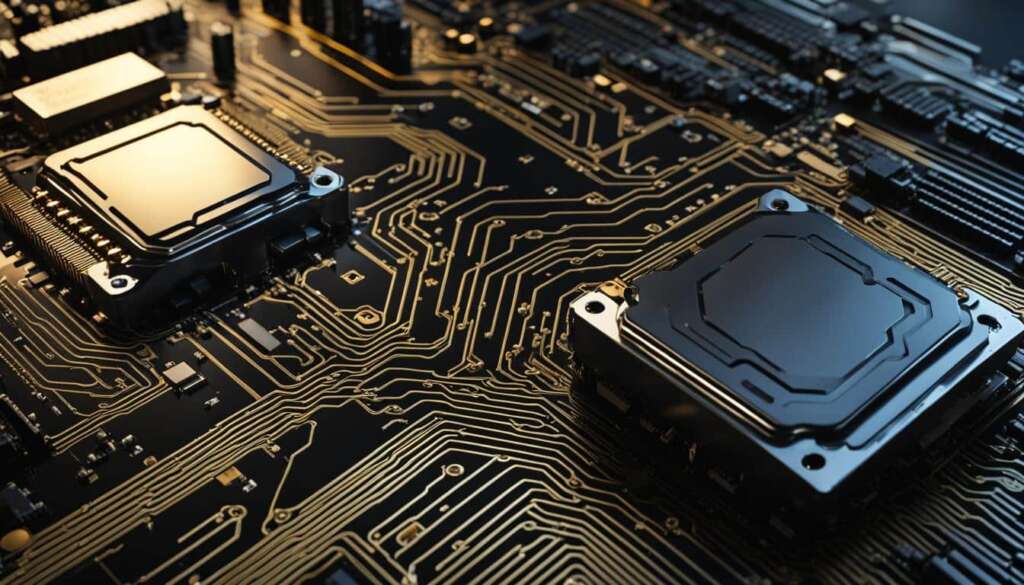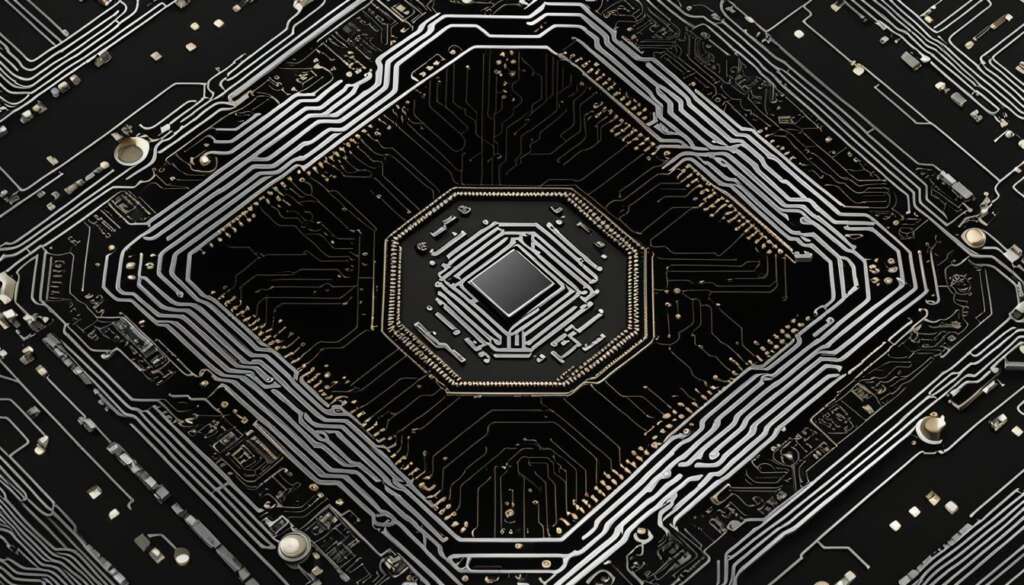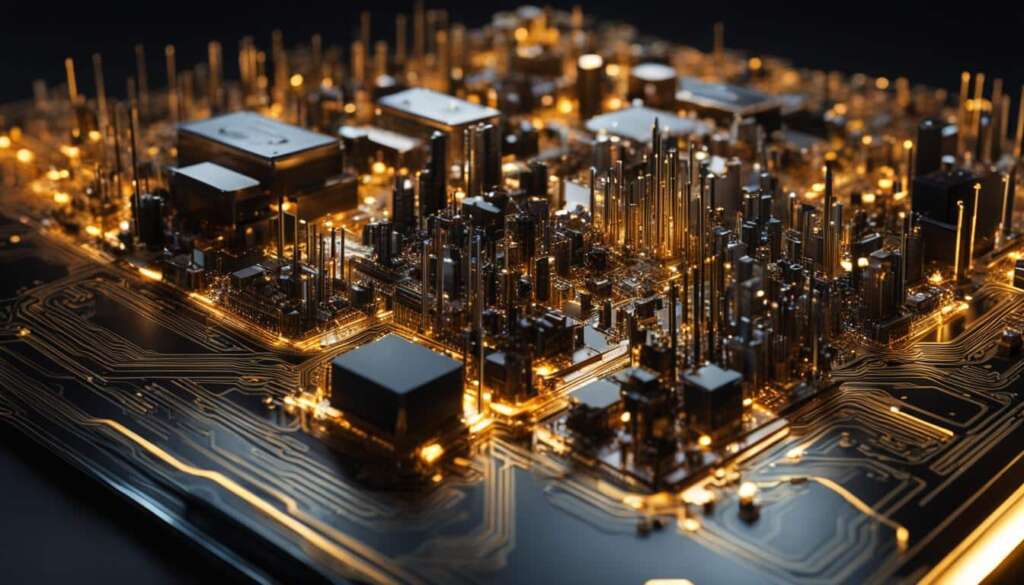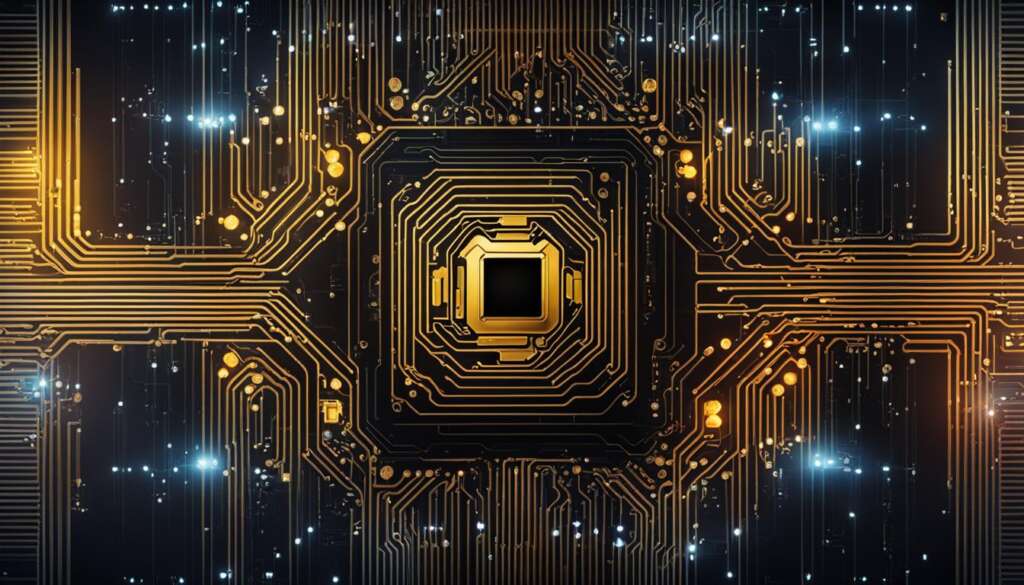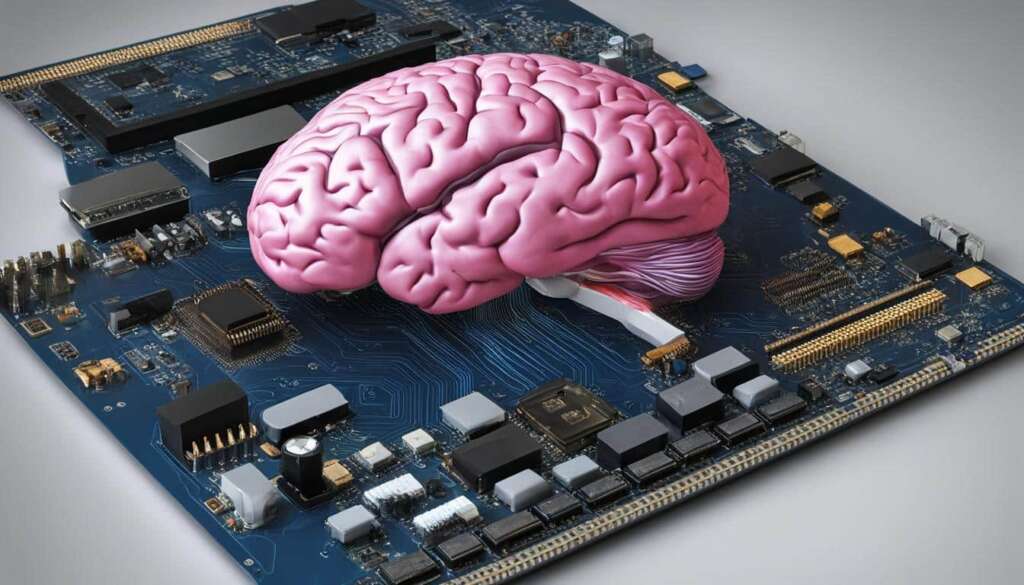Table of Contents
A central processing unit (CPU), also known as a central processor or main processor, is the most important processor in a computer. It executes instructions of a computer program, performing tasks such as arithmetic, logic, controlling, and input/output (I/O) operations. The CPU consists of several components, including the arithmetic-logic unit (ALU) for arithmetic and logic operations, processor registers for storing operands and results, and a control unit for coordinating operations. Modern CPUs dedicate semiconductor area to caches, instruction-level parallelism, and privileged modes. They are implemented on integrated circuit (IC) microprocessors, with multiple CPUs on a single chip. CPUs can also be multithreaded and found in devices such as microcontrollers and systems on a chip.
Key Takeaways:
- A CPU is the central processing unit, or main processor, of a computer.
- It executes instructions and performs various tasks, including arithmetic and logic operations.
- Modern CPUs are implemented on integrated circuit microprocessors and can have multiple cores.
- CPU technology has evolved over time, becoming smaller, more powerful, and more efficient.
- CPU’s are essential components in computers, microcontrollers, and systems on a chip.
CPU Basics: Components and Operations
In this section, we will explore the fundamental elements of a CPU and its primary operations. Understanding these components and functions is crucial for grasping the inner workings of a computer processor.
Components of a CPU
A CPU consists of several key components that work together to execute instructions and perform tasks. These components include:
- Arithmetic-Logic Unit (ALU): The ALU handles arithmetic and logic operations within the CPU. It performs mathematical calculations, logical comparisons, and bitwise operations.
- Floating-Point Unit (FPU): The FPU is responsible for performing complex floating-point operations, such as decimal arithmetic and handling real numbers with great precision.
- Registers: Registers are small, high-speed storage locations within the CPU. They store instructions, data, memory addresses, and intermediate results during processing.
- Cache Memory: Cache memory is a high-speed memory located close to the CPU. It stores frequently accessed data, allowing for quicker access compared to main memory.
These components work in harmony to provide the CPU with the necessary resources for efficient data processing and manipulation.
Operations of a CPU
The CPU performs four primary functions in a systematic manner known as the fetch–decode–execute–write back cycle. These operations are:
- Fetch: During the fetch stage, the CPU retrieves instructions from memory. It identifies the next instruction to be executed and brings it into the CPU for processing.
- Decode: In the decode stage, the CPU interprets the fetched instruction and translates it into a series of machine-level operations. It determines the actions required to execute the instruction.
- Execute: The execute stage is where the CPU carries out the actual processing specified by the decoded instruction. It performs the necessary arithmetic, logical, or data transfer operations.
- Write Back: Finally, in the write back stage, the CPU stores the results of the execution back into memory or registers. The modified data can then be used for subsequent instructions or operations.
This fetch–decode-execute-write back cycle repeats continuously, enabling the CPU to process instructions and data effectively.
CPU Types and Features
When it comes to CPUs, there is a wide range of types and features available in the market today. Let’s explore some of the key variations that you should be aware of:
Multi-Core Processors
Multi-core processors are the most common type of CPUs found in modern computers. These processors have multiple CPU cores integrated onto a single chip. This design allows for enhanced performance, as each core can handle its own set of instructions simultaneously. It also enables efficient multitasking and improved power consumption.
Single-Core Processors
Single-core processors, as the name suggests, consist of only one CPU core. These processors are less common nowadays but can still be found in some low-power devices or older computer systems. Single-core processors are limited in their ability to handle multiple tasks concurrently.
Dual-Core Processors
Dual-core processors feature two CPU cores, making them more capable of handling multiple tasks compared to single-core processors. With dual cores, these processors can divide the workload and execute instructions in parallel, leading to improved performance and responsiveness.
Quad-Core Processors
Quad-core processors take the concept of multi-core CPUs further by incorporating four CPU cores on a single chip. This configuration allows for even greater multitasking capabilities and efficient processing of complex tasks. Quad-core processors are commonly found in high-performance computers and devices.
Multi-Threading
Multi-threading is a technique used in certain CPUs to further boost performance. It involves the creation of virtualized processor cores, called vCPUs, that work alongside the physical CPU cores. This enables the CPU to handle multiple threads or processes concurrently, maximizing efficiency in tasks such as virtualization or running multiple applications simultaneously.
Here’s a visual representation of the different CPU types and their core configurations:

| CPU Type | Number of Cores | Primary Use |
|---|---|---|
| Single-Core | 1 | Low-power devices, basic computing tasks |
| Dual-Core | 2 | Entry-level computers, multitasking |
| Quad-Core | 4 | High-performance computing, gaming, content creation |
| Multi-Core (more than quad-core) | Varies | Specialized applications, advanced multitasking |
By understanding the different CPU types and their features, you can make informed decisions when selecting a processor that suits your computing needs.
The Evolution of CPUs
Central Processing Units (CPUs) have undergone significant evolution over the years, driven by advancements in technology. These advancements have led to the development of faster, more efficient, and more reliable CPUs that have revolutionized the world of computing. In this section, we will explore some of the key milestones in the evolution of CPUs, from the early days of transistor-based CPUs to the era of integrated circuits and large-scale integration.
Transistor CPUs: Smaller and More Reliable
One major breakthrough in CPU technology was the development and adoption of transistor-based CPUs. Transistors replaced the bulky and unreliable switching elements, such as vacuum tubes, that were used in early computers. The introduction of transistors enabled the creation of smaller and more reliable CPUs, paving the way for further advancements in computing technology.
The IBM System/360 and the Concept of Microcode
In the 1960s, the IBM System/360 made a significant impact on CPU design. This mainframe computer system introduced the concept of microcode, a low-level control program that allows for the customization of CPU instructions. Microcode is still used in modern CPUs to optimize performance and improve functionality.
Integrated Circuits: Miniaturization and Standardization
Another major leap forward came with the advent of integrated circuits (ICs). Integrated circuits allowed for the miniaturization of CPUs by packing multiple components onto a single chip. This not only reduced the physical size of CPUs but also improved their performance and reliability.
Integrated circuits came in two main forms: small-scale integration (SSI) and large-scale integration (LSI). SSI CPUs contained a few dozen transistors, while LSI CPUs integrated thousands of components onto a single chip. This standardization and miniaturization of CPUs played a crucial role in their widespread use across various applications.
With each new generation of CPU technology, we witnessed remarkable progress in terms of speed, efficiency, and capabilities. The continued evolution of CPUs has propelled the development of advanced computing systems, enabling us to accomplish tasks that were once unimaginable.
Conclusion
In conclusion, a CPU (central processing unit) is the main processor in a computer, responsible for executing instructions and performing various tasks. The CPU consists of several components, including the arithmetic-logic unit (ALU), registers, and control unit. The ALU handles arithmetic and logic operations, while the registers store instructions and data. The control unit coordinates the operations of the CPU.
CPU types can be categorized based on the number of cores they have. Multi-core processors, such as dual-core and quad-core processors, offer enhanced performance by being able to handle multiple instructions simultaneously. Over time, CPUs have evolved from transistor-based designs to integrated circuit-based designs. This evolution has allowed for smaller, more powerful CPUs that can fit on a single chip.
CPU functions include fetching instructions from memory, decoding them, executing the necessary operations, and storing the results back in memory. CPUs are crucial in powering computing devices and have become integral to modern life, as they are found in a wide range of devices like computers, smartphones, and even IoT devices. The constant evolution of CPUs ensures that computing technology continues to advance, enabling faster and more efficient processing.
FAQ
What does CPU mean?
CPU stands for central processing unit, which is the main processor in a computer responsible for executing instructions and performing various tasks.
What are the components and operations of a CPU?
The basic elements of a CPU include the arithmetic-logic unit (ALU) for arithmetic and logic operations, a floating-point unit (FPU) for faster number manipulation, registers for storing instructions and data, and cache memory for quick data access. The CPU performs four primary functions: fetch, decode, execute, and write back.
What are the different types of CPUs?
CPUs can range from single-core processors that handle one instruction at a time to multi-core processors, such as dual-core and quad-core processors, that handle multiple instructions simultaneously. Some processors also use multi-threading, where virtualized processor cores called vCPUs are used to improve performance in virtual machines.
How have CPUs evolved over time?
CPUs have evolved from transistor-based designs to integrated circuit-based designs. Advancements in technology have allowed for the miniaturization of CPUs, with large-scale integration (LSI) CPUs containing thousands of components on a single chip. This standardization and miniaturization have led to the widespread use of CPUs in various applications.


